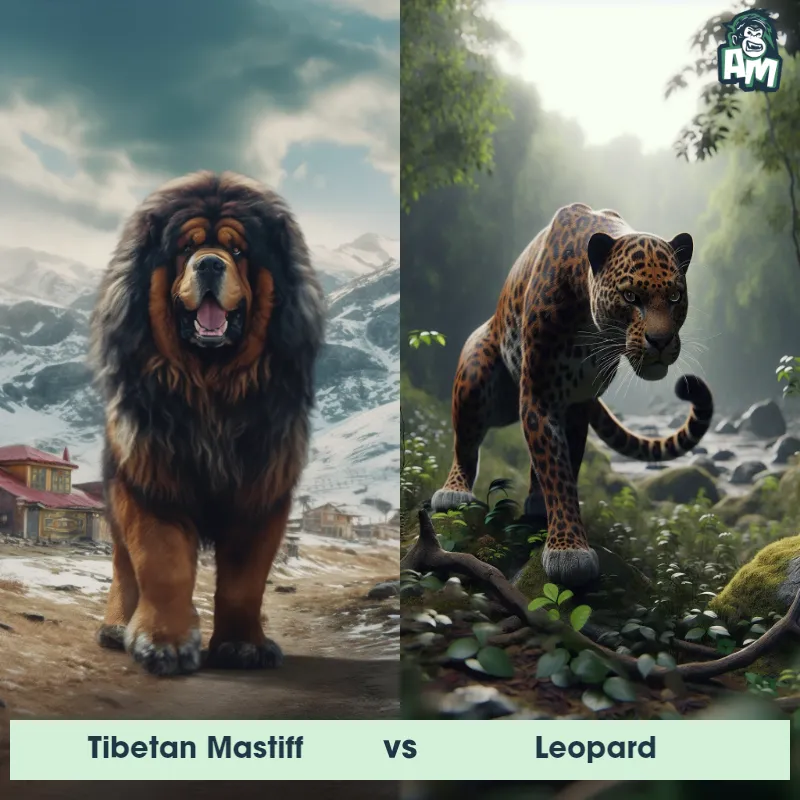Giant Panda vs TigerSee Who Wins

Welcome, ladies and gentlemen, to this thrilling matchup between a Giant Panda and a ferocious Tiger! The crowd is on their feet, anxiously waiting to see who will come out on top in this epic battle of strength and agility. With both animals being formidable opponents in their own right, this promises to be a matchup for the ages. The tension in the air is palpable as we prepare for round one!
Contender 1: Giant Panda
The Giant Panda, also known as the panda bear, is a beloved and iconic animal native to China. These bears are easily recognizable by their black and white fur, with black patches around their eyes, ears, and legs. They have a round face, short tail, and a stocky build, with adults weighing up to 330 pounds. Giant Pandas are herbivores, primarily eating bamboo, and are known for their gentle nature and playful behavior.
Fun Fact: Giant Pandas have a unique thumb-like extension on their front paws that helps them grip bamboo while they eat.
Contender 2: Tiger
The Tiger is a large and powerful big cat, known for its distinct orange coat patterned with black stripes, which are unique to each individual, much like a human fingerprint. Tigers have a muscular build, a heavy head with strong jaws, and a tail that is usually about half the length of their body. The largest species of the cat family, adult male tigers can reach up to 10 feet in length and weigh up to 660 pounds. Tigers are native to various parts of Asia and are adept swimmers, unlike most members of the cat family.
Fun Fact: Tigers are apex predators and primarily consume larger mammals for food, including deer and wild boar; a hungry tiger can eat as much as 60 pounds in one night.
Matchup Stats
| Giant Panda | Tiger | |
|---|---|---|
| Size | 4-6 feet (1.2-1.8 meters) | Up to 10 feet in length (3.05 meters) |
| Weight | Up to 330 pounds (150 kilograms) | Up to 660 pounds (300 kilograms) |
| Speed | Speed: 20 mph (32.19 km/hr) | 35-40mph (56-64km/h) |
| Key Strength | Powerful jaws and sharp claws | Strong jaws and muscular build |
| Biggest Weakness | Slow movement and lack of aggression | Limited endurance for long chases |
Current Votes
Giant Panda vs Tiger
See Who Wins
View More Matches
Looking For More?
Similar Matches
Scientific Stats
| Giant Panda | Tiger | |
|---|---|---|
| Scientific Name | Ailuropoda melanoleuca | Panthera tigris |
| Family | Ursidae | Felidae |
| Habitat | Forests | Forests, grasslands, and swamps |
| Geography | China | Asia |
| Diet | Herbivore, primarily bamboo | Carnivorous, primarily deer and wild boar |
| Lifespan | 20 years - 30 years | 15 years - 26 years |
Key Differences between Giant Panda and Tiger
- Facial Features: The Giant Panda has a broad, flat face with round black ears, dark eye patches, and a short snout, while the Tiger has a narrow, elongated face with pointy ears, piercing eyes, and prominent cheekbones.
- Coloration: The Giant Panda is renowned for its black and white fur pattern, with black patches around its eyes and across its body, while the Tiger has a distinct orange or reddish-orange coat with dark vertical stripes and a white belly.
- Tail: The Giant Panda has a relatively short, stubby tail that measures between 4 and 6 inches, which is usually hidden among its fur, whereas the Tiger has a long, thick tail measuring up to 3 feet, often used for balance and communication.
- Size: The Giant Panda is significantly smaller than the Tiger, with adult pandas weighing between 220 and 330 pounds, whereas adult tigers can weigh anywhere from 200 to 700 pounds.
- Habitat: The Giant Panda is primarily found in mountainous regions of central China, inhabiting dense bamboo forests at high elevations, while the Tiger has a wider range, occupying various habitats across Asia, including grasslands, forests, and mangrove swamps.
- Body Shape: The Giant Panda has a round and somewhat stout body shape, with a large head, short legs, and a plump appearance, while the Tiger has a more muscular and streamlined body, with a long, flexible spine, powerful legs, and a slender build.
































